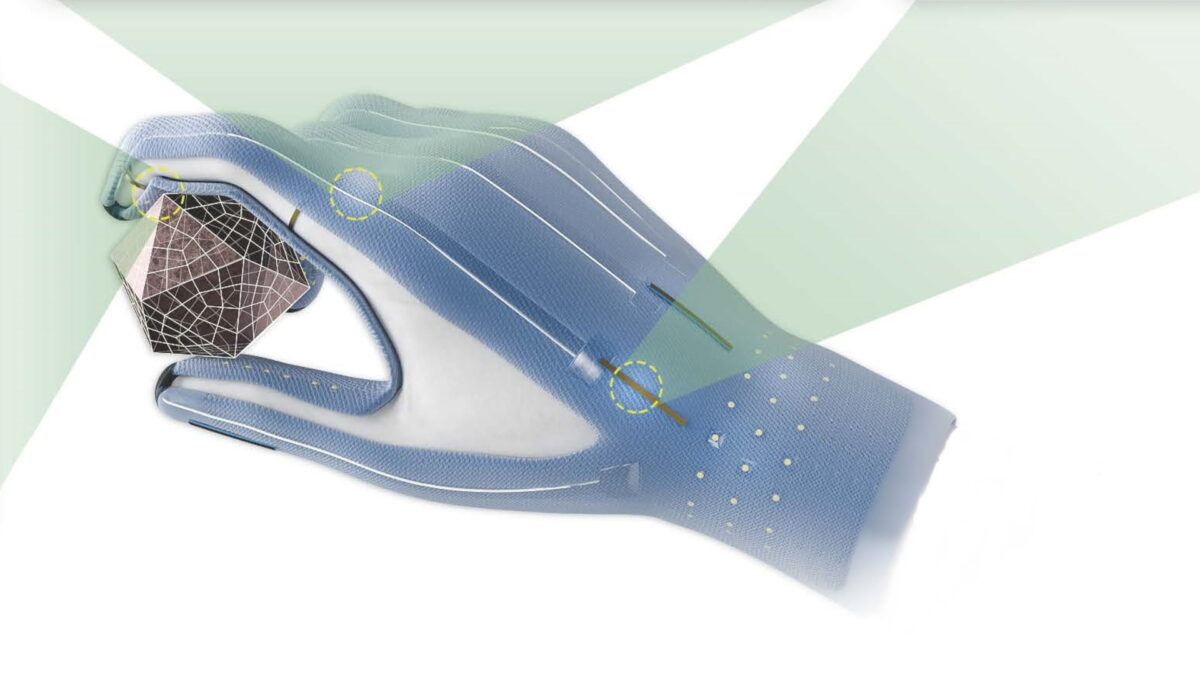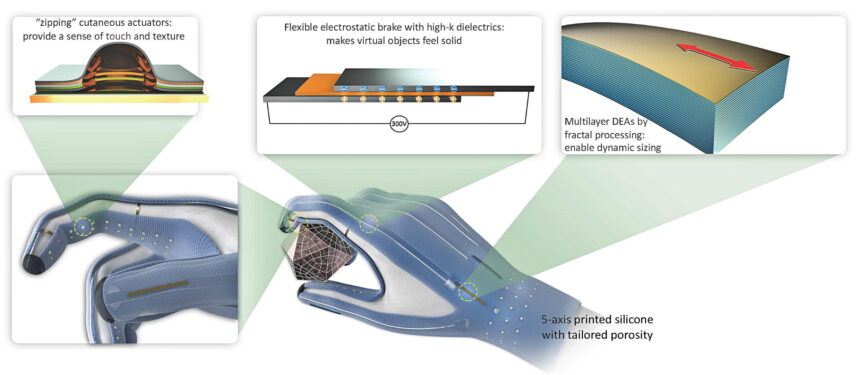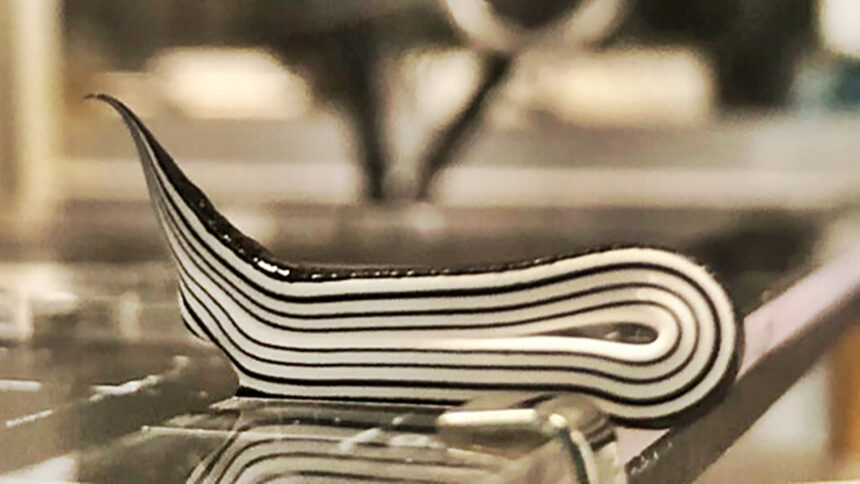Researchers aim to 3D print a haptic VR glove with artificial muscles

Researchers are working on a custom 3D-printed VR glove equipped with artificial muscles. The team aims to be the first in the world to print a haptic VR glove.
ETH Zurich is conducting joint research with the Swiss Federal Laboratories for Materials Testing and Research (Empa) on a new type of virtual reality glove. The glove is to be produced largely automatically using 3D printing and can thus be adapted to the user.
Swiss researchers want to print a haptic VR glove
In a four-year project called "Manufhaptics," the researchers aim to produce a haptic glove that makes virtual worlds tangible. The difference between this and current VR gloves such as the Manus Metaglove is that Manufhaptics will be made of entirely new materials. This is necessary because all components will be automatically 3D printed.
The researchers want to integrate three different types of actuators into the glove to make virtual surfaces tactile and objects tangible. They are to create nubs on the underside of the fingers that replicate the texture of a surface, making it tactile.

Millimeter-sized, hydraulically reinforced electrostatic actuators are to provide the feeling of touch. | Image: Empa
To this end, electrostatic brakes are attached around the finger joints to stiffen the glove and block joints. This is intended to simulate large, solid objects that generate resistance when touched.
Dielectric elastic actuators (DEA) come into play as a third type. They are used on the back of the hand and tighten the outer skin of the glove so that it fits perfectly. They can also apply pressure to the surface of the hand.
Research on new materials for VR glove
"These elastic polymers react to electric fields and contract, like a muscle," explains Dorina Opris, head of the research group. "But they can also serve as a sensor, absorbing an external force and generating an electrical impulse from it. We're also thinking of using them to generate energy locally. Electricity can thus be generated everywhere from movement."

The electroactive polymer is said to have a consistency similar to hand cream. Artificial muscles could thus be produced automatically in a 3D printer. | Image: Empa
Up to a thousand 3D-printed fine layers are put on top of each other for the artificial muscles, electroactive polymers and a current-conducting layer alternate. The two inks needed for this must have the right consistency for 3D printing.
"It should come out of the printer easily and then remain dimensionally stable on the substrate," says Empa researcher Patrick Danner. The material properties should resemble those of a hand cream.
Tazio Pleji from ETH Zurich has already successfully processed the material into several layers in his 3D printer. But they are still a long way from the thousand layers they are aiming for. So far, there are about ten layers, and the artificial muscle is not yet working properly, says Pleji. Nevertheless, the researchers are confident that they will be the first research team in the world to produce a VR glove with a 3D printer.
Note: Links to online stores in articles can be so-called affiliate links. If you buy through this link, MIXED receives a commission from the provider. For you the price does not change.